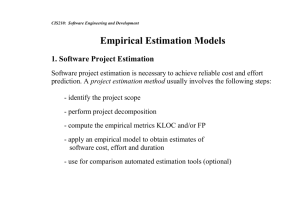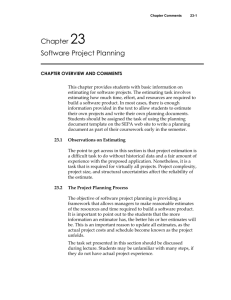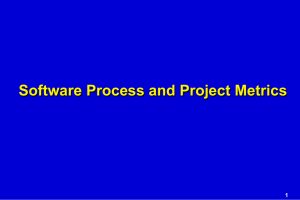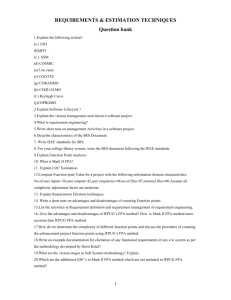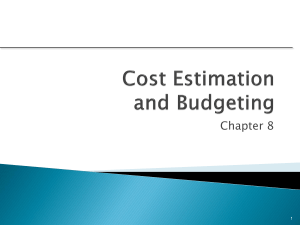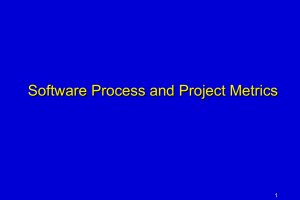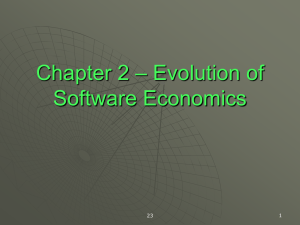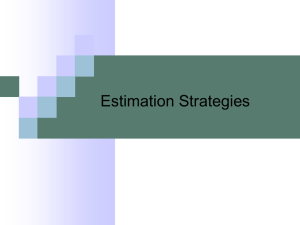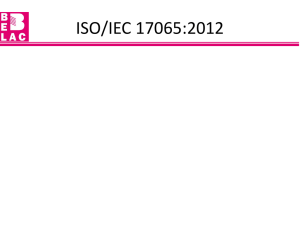Introduction
advertisement
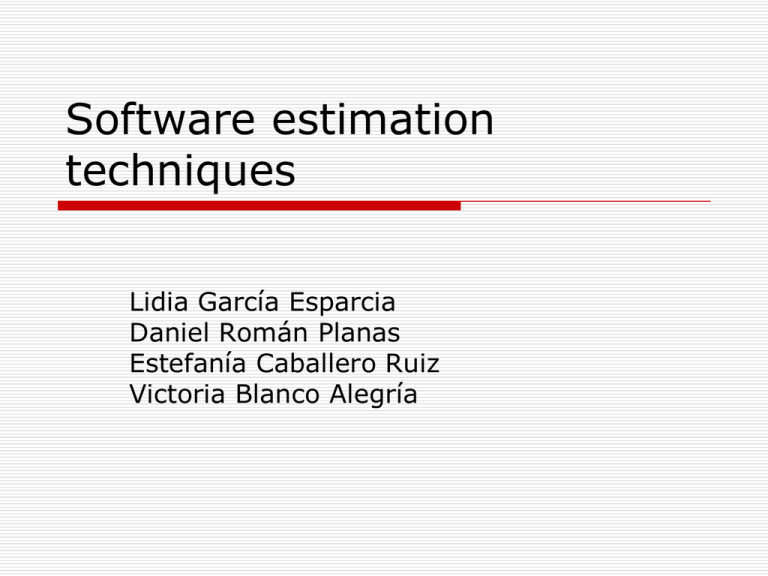
Software estimation techniques Lidia García Esparcia Daniel Román Planas Estefanía Caballero Ruiz Victoria Blanco Alegría Index Introduction Current situation Estimation techniques Function points Characteristic points Lines of code Comparative Conclusion Future trends Sources Introduction Why we measure? Evaluate the productivity Evaluate the profits A previous stage before estimate Justify using new tools Software projects are typically controlled by four major variables; time, requirements, resources (people, infrastructure/materials, and money), and risks. Overestimating needs can be very expensive for the organization 3 kinds of methods Current situation All sw development companies use planning techniques in order to estimate the cost of a project. Break the project down into the different tasks needed. Evaluate each task on two scales: complexity and size of work Function points Index Introduction ISO/IEC 14143 IFPUG-FPA MK II COSMIC FFP Method Evolution Criticism Introduction Functional Size Measurement Method Simple Independent of the technology Based on functional user requirements Consistent Estandar Unit of measurement to express the amount of business functionality an information system provides to a user. ISO/IEC 14143 Define the concepts and features that a method should satisfy in order to be approved. Methods: ISO/IEC 20926:2003 Software engineering -- IFPUG 4.1 Unadjusted functional size measurement method ISO/IEC 24570. Software engineering -- NESMA -- Function Point Analysis. ISO/IEC 20968:2002 Software engineering -- Mk II Function Point Analysis ISO/IEC 19761:2003 Software engineering -- COSMIC-FFP -A functional size measurement method IFPUG - FPA “Standard method for measuring the development of software from the user's point of view. In 1986, Allan Albrecht found the International Function Point User Group Most famous and most used Number of function points acording to the component type (transaction functions, data files) and its complexity. Adjustment of the result Evaluates the size of the project, cost and development time . Has limitations for measuring software in real time systems. MK II Developed in 1986 by KPMG, defined and published by Charles R. Symons in 1991. Adopted by UKSMA (United Kingdom Software Metrics Association. Method of continuous measurement throughout the life cycle of an application Derivation of the Albrecht’s function Points . Logic discrete transactions consisting of entry, process and exit COSMIC-FFP FFP (v. 1.0) was published in 1997 as an extension of IFPUG method to measure the functional size of real-time software and control systems. In 1998, a group of experts in software metrics, established the Common Software Measurement International Consortium (COSMIC FFP). Introduces additional data and transactional function types: Control Data: Multiple occurrence logical group Single ocurrence logical group. Transactions: Full Function Points enter into the calculation not only processes but also includes subprocesses . The other types of data and processes are counted with the standard FPA technique Method Evolution Criticism Additional dedication in the software development projects. It is hard to train staff in their use. The method of calculation is subjective. Need to re-estimate the size as we have more product knowledge. Lacks precision when it comes to small projects. Not applicable to all systems. Feature points Index Introduction Method Example Advantages Feature points Introduction Software estimation method designed by Caper Jones. Very similar to function points, but more accurate for estimating scientific and complex software. Used specifically for CAD software, embedded systems and real-time applications. Feature points Introduction The differences between function points and feature points are in the algorithm cost estimation, that is new on feature points, and the removal of the different complexity levels, establishing just one for each feature. Feature points Method 1. Count the number of the different features. 2. Calculate the cost of these features. Feature points Count the number of different features Features in this step are the same that function points define, adding the count of the algorithms. This is: External inputs. External outputs. External queries. Internal logical files. External logical files. Algorithms. Feature points Calculate features’ cost Each feature has an unique complexity value. Cost estimation of that features is calculated by multiplying complexity by the count of that feature. Final estimation are done by applying this equation: FPE = TOTAL_COUNT * (0.65 + 0.01 * SUM(Fi)) Fi => Result of question number i on information system survey, also defined on function points estimation. Feature points Example FUNCTION POINTS Feature points Example FEATURE POINTS Feature points Advantages More accurate when is applied to scientific, mathematic, real-time or military software, which uses complex algorithms. Used on other kinds of software, feature points offers similar results than function points calculate. Lines of code Index Introduction Types Example Estimating Effort Advantages Disadvantages Lines of code Introduction Measures the size of a software project counting the number of lines of code. Predict the amount of effort. Estimate programming productivity. Estimate effort once the software is produced. Lines of code Types Physical SLOC Count the lines of the program's source code. Logical SLOC Measure the number of statements. Lines of code Example Lines of code Productivity = KLOC / person-month Quality = defects / KLOC Cost = Cost / KLOC Documentation = pages of documentation / LOC Lines of code Estimating effort It is based on previous projects or on the experience of the developer. Lines of code E = (a + 4m + b) / 6 a= ideal number of LOC b= pessimistic number of LOC m= most probable number of LOC Lines of code Advantages Easy method Many methods use LOC as an imput Lines of code Disadvantages Lack of Cohesion with Functionality Lack of Accountability Difference in Languages Lack of Counting Standards Psychology Comparative Method Uses Staff During the project Function points Not all systems and lacks precision in small projects Hard to train Need to re-estimate the size as we have more product knowledge Feature points Software that uses complex algorithms Not easy to learn Lines of code Many methrics use LOC as an imput Easy Based in other projects or in own experience Conclusion The fundamental goals of software estimation are to produce estimations of effort and schedule for anticipated software projects Increasingly, it is recognized that software estimation techniques must reflect, and be an integral part of, the technical and managerial processes used to develop and modify software. The preceding techniques can help one achieve better estimates Sources: www.inf.udec.cl www.monografias.com www.willydev.net www.wikipedia.com


